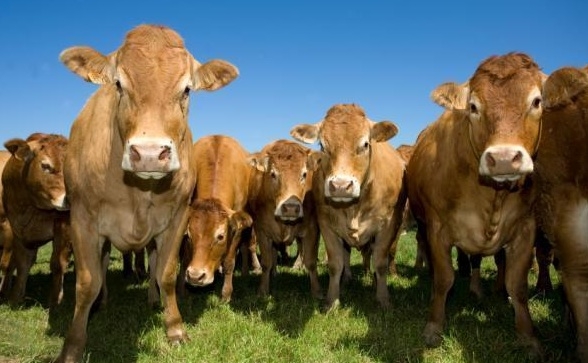
Features
Air quality
Environment
Environment Protection
Global
Livestock Production
Regulations
Research
Sustainability
Global methane emissions from agriculture larger than reported
October 2, 2017 by Press release

October 2, 2017 – Global methane emissions from agriculture are larger than estimated due to the previous use of out-of-date data on carbon emissions generated by livestock, according to a study published in the open access journal Carbon Balance and Management.
In a project sponsored by the U.S. National Aeronautics and Space Administration’s (NASA) Carbon Monitoring System research initiative, researchers from the Joint Global Change Research Institute (JGCRI) found that global livestock methane (CH4) emissions for 2011 are 11 percent higher than the estimates based on guidelines provided by the Intergovernmental Panel on Climate Change (IPCC) in 2006. This encompasses an 8.4 percent increase in CH4 from enteric fermentation (digestion) in dairy cows and other cattle and a 36.7 percent increase in manure management CH4 compared to IPCC-based estimates. Revised manure management CH4 emissions estimates for 2011 in the U.S. from this study were 71.8 percent higher than IPPC-based estimates.
“In many regions of the world, livestock numbers are changing, and breeding has resulted in larger animals with higher intakes of food,” said Dr. Julie Wolf, U.S. Department of Agriculture (USDA), Agricultural Research Service (ARS), senior author of the study. “This, along with changes in livestock management, can lead to higher methane emissions. Methane is an important moderator of the Earth’s atmospheric temperature. It has about four times the atmospheric warming potential of carbon dioxide. Direct measurements of methane emissions are not available for all sources of methane. Thus, emissions are reported as estimates based on different methods and assumptions. In this study, we created new per-animal emissions factors – that is measures of the average amount of CH4 discharged by animals into the atmosphere – and new estimates of global livestock methane emissions.”
The authors re-evaluated the data used to calculate IPCC 2006 CH4 emission factors resulting from enteric fermentation in dairy cows and other cattle, and manure management from dairy cows, other cattle and swine. They show that estimating livestock CH4 emissions with the revised emissions factors, created in this study, results in larger emission estimates compared to calculations made using IPCC 2006 emission factors for most regions, although emission estimates varied considerably by region.
“Among global regions, there was notable variability in trends in estimated emissions over recent decades,” said Dr Ghassem Asrar, director of JGCRI and a co-author of study. “For example, we found that total livestock methane emissions have increased the most in rapidly developing regions of Asia, Latin America and Africa. In contrast, emissions increased less in the U.S. and Canada, and decreased slightly in Western Europe. We found the largest increases in annual emissions to be over the northern tropics, followed by the southern tropics.”
The estimates presented in this study are also 15 percent larger than global estimates provided by the U.S. Environmental Protection Agency (EPA), only slightly smaller than estimates provided by the EPA for the U.S., four percent larger than EDGAR (Emissions Database for Global Atmospheric Research) global estimates, three percent larger than EDGAR estimates for U.S. and 54 percent larger than EDGAR estimates for the state of California. Both the EPA and EDGAR use IPCC 2006 default information, which may have contributed to the under estimations.